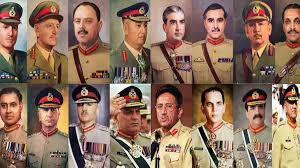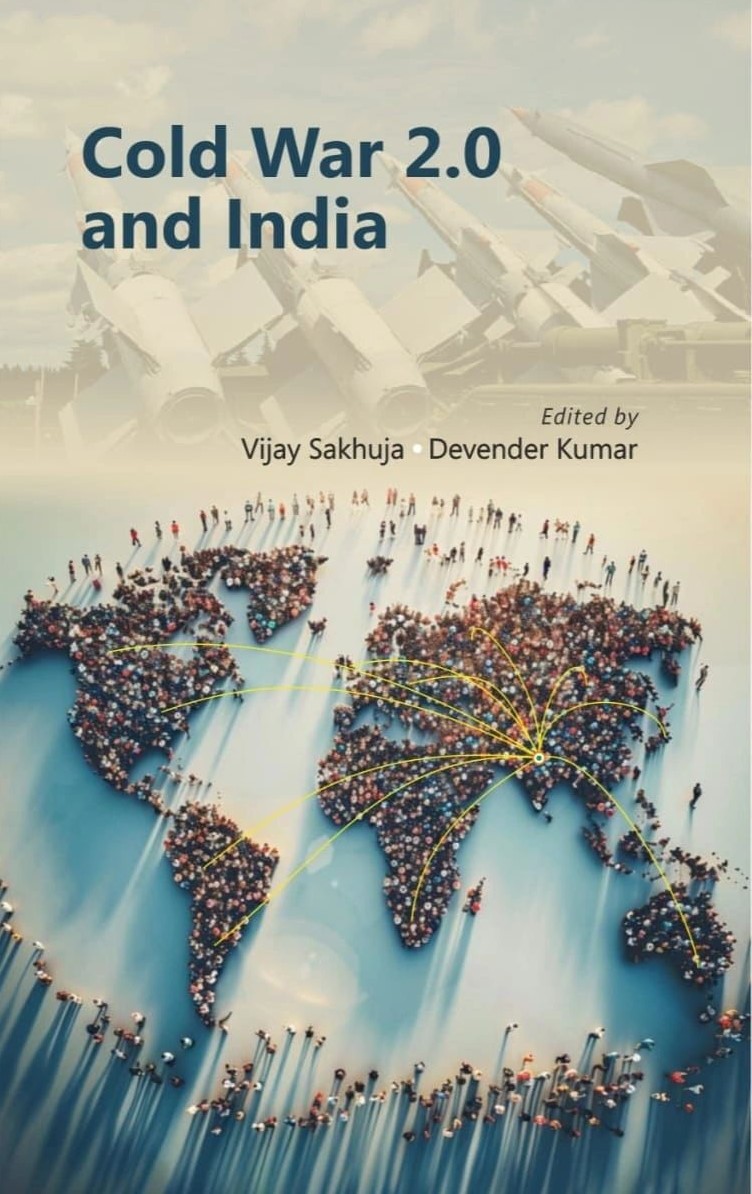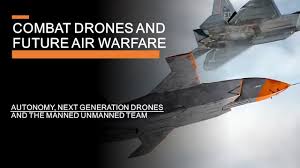My article published on the IIRF and “Life of Soldier” website on 08 May 25.
“While most nations have an army, in Pakistan, the army has a nation.”
— Widely cited in analyses of Pakistan’s civil-military ties
Pakistan, a nation born from the aspirations of a free and prosperous Muslim homeland, finds itself trapped in a cycle of stagnation and regression. The title “Pakistan’s Backwards March” encapsulates a grim reality: a country with immense potential is being held hostage by its power structures, particularly the omnipresent influence of its military establishment. Led by the generals, this march backwards is a betrayal of the nation’s founding ideals and a burden borne disproportionately by its people. Understanding the historical and contemporary dynamics of military dominance reveals that Pakistan’s elusive path toward a more democratic and equitable future can only be charted by its citizens. However, the time for this charting is not just now, but now or never.
The Generals’ Grip: A Historical Perspective
Since its inception in 1947, Pakistan’s military has positioned itself as the ultimate arbiter of the nation’s destiny. The country’s early years were marked by political instability, with weak civilian governments unable to consolidate power. This vacuum allowed the military to subtly and overtly step in as the self-proclaimed guardian of national interests. The first military coup in 1958, led by General Ayub Khan, set a precedent that still haunts Pakistan. Subsequent coups under Yahya Khan, Zia-ul-Haq, and Pervez Musharraf entrenched the military’s role as the dominant force in politics.
The military’s justification for its interventions has often been cloaked in the rhetoric of stability and security. Pakistan’s volatile geopolitical environment has been cited as a reason for the need for a strong, centralised authority. The Kashmir conflict, the Soviet invasion of Afghanistan, and the post-9/11 war on terror further amplified the military’s influence, as it positioned itself as the bulwark against external and internal threats. However, this narrative conveniently obscures the military’s role in perpetuating instability to maintain its grip on power.
The military’s dominance is not merely political; it extends into the nation’s economic and social fabric. Through sprawling business empires like the Fauji Foundation and the Army Welfare Trust, the military controls vast sectors of the economy, from agriculture to real estate. These enterprises, often tax-exempt, operate with little transparency, siphoning resources that could otherwise fund public services. Meanwhile, the military’s influence over media and civil society stifles dissent, ensuring its narrative remains unchallenged.
The People’s Burden: Economic and Social Costs
The consequences of this military-led governance model are borne by Pakistan’s 240 million citizens, who face a litany of challenges exacerbated by the generals’ priorities. The economy, perpetually on the brink, is a stark reflection of mismanagement and skewed resource allocation. Pakistan’s GDP growth has lagged behind its South Asian neighbours, averaging around 3-4% annually over the past decade, compared to India’s 6-7%. Public debt has skyrocketed, with external debt surpassing $130 billion in 2024, driven by loans from the IMF and bilateral creditors like China. This economic burden is not just a statistic, but a daily struggle for the people.
The military’s outsized budget is a significant drain on national resources. In 2023, defence spending accounted for roughly 4% of GDP, dwarfing allocations for education (1.7%) and healthcare (1.4%). While the military justifies its budget by citing security threats, the lack of transparency raises questions about how these funds are used. Meanwhile, ordinary Pakistanis grapple with inflation rates hovering around 10-12%, unemployment affecting nearly 10% of the workforce, and a poverty rate that leaves over 40% of the population below the international poverty line.
Socially, likewise, the military’s dominance has stifled democratic institutions and civil liberties. The judiciary struggles to uphold the rule of law, often cowed by military pressure. Political parties, while complicit in their failures, are frequently manipulated or sidelined through engineered elections or disqualifications. The 2018 elections, widely criticised for military interference, saw the rise of Imran Khan’s PTI, only for Khan to later fall out with the establishment, leading to his ouster in 2022 and subsequent imprisonment. This cycle of co-optation and discardment undermines democratic continuity and public trust.
Once a vibrant space for debate, the media now operates under severe constraints. Journalists face harassment, censorship, and even violence for criticising the military. Social media platforms, while offering some resistance, are increasingly monitored, with laws like the Prevention of Electronic Crimes Act used to silence dissent. Civil society organisations, too, face restrictions, leaving little room for grassroots movements to challenge the status quo.
Education and healthcare, critical for human development, remain woefully underfunded. Pakistan’s literacy rate hovers around 60%, and its public schools are plagued by dilapidated infrastructure and teacher shortages. Strained by population growth and inadequate facilities, the healthcare system leaves millions without access to basic care. These failures are not merely administrative; they reflect a deliberate prioritisation of military interests over human welfare.
The Vicious Cycle: Instability and Dependency
The military’s dominance creates a vicious cycle of instability and dependency. By undermining civilian institutions, the generals ensure that no alternative power center can emerge, perpetuating their indispensability. This weakens governance, leading to economic crises that necessitate foreign bailouts. The IMF’s repeated interventions (Pakistan has availed itself of 23 IMF programs since 1958) come with austerity measures that hit the poor hardest, further fuelling discontent.
Foreign policy, too, is shaped by military priorities, often at the expense of national interests. Pakistan’s alignment with the U.S. during the Cold War and the war on terror brought billions in aid but also drew the country into conflicts that destabilised its northwest. While promising infrastructure development, the China-Pakistan Economic Corridor (CPEC) has deepened Pakistan’s debt to China, with opaque agreements raising concerns about sovereignty. The military’s control over foreign policy limits diplomatic flexibility, as seen in Pakistan’s strained relations with India and its delicate balancing act between the U.S. and China.
Internally, the military’s counterterrorism operations, while necessary, have often been heavy-handed, alienating communities in regions like Balochistan and Khyber Pakhtunkhwa. The Baloch insurgency, fuelled by economic marginalisation and human rights abuses, is a case in point. Forced disappearances and extrajudicial killings, attributed to security forces, have deepened mistrust, making reconciliation elusive.
A Path Forward: Reclaiming Pakistan’s Future
Breaking the backwards march of Pakistan requires a fundamental reorientation of its entrenched power dynamics. For decades, the military establishment has held disproportionate sway over national policy, foreign relations, and even economic priorities, often at the expense of democratic development and civilian governance. This imbalance has fostered instability, weakened institutions, and stifled public dissent. To move forward, the people of Pakistan must reclaim their agency and demand accountability from both military and civilian leaders. This means bolstering civil society, protecting press freedom, and empowering grassroots democratic movements. Actual progress will not come from external aid or authoritarian “stability,” but from an engaged citizenry that insists on transparency, the rule of law, and genuine representation. Reclaiming power from entrenched elites will be difficult. Still, it is the only path toward a more equitable, prosperous, and sovereign Pakistan—one where the state serves its citizens, not the other way around.
The first step would be strengthening civilian institutions. A robust judiciary, free from military influence, is essential for upholding the rule of law. Political parties must prioritise internal democracy and governance reforms over short-term alliances with the military. Civil society, including media and NGOs, needs space to operate without fear, fostering a culture of accountability.
Economically, reallocating resources from defence to development is critical. Investing in education and healthcare can unlock Pakistan’s human potential, creating a more skilled and productive workforce. Economic diversification, beyond reliance on agriculture and textiles, is also necessary to reduce vulnerability to global shocks.
Foreign policy must be wrested from military control and aligned with national interests. Normalising relations with India, particularly through trade, could unlock economic benefits for both nations. A balanced approach to global powers, avoiding over-dependence on any single ally, would enhance Pakistan’s sovereignty and diplomatic leverage.
Conclusion
Pakistan’s backwards march, orchestrated by its generals, is a tragedy of squandered potential. The military’s dominance has enriched a small elite while impoverishing the masses economically and democratically. Yet, the resilience of Pakistan’s people offers hope. Pakistan can reverse its trajectory by empowering civilian institutions, prioritising human development, and fostering a culture of accountability. The path is fraught with challenges, but the alternative of continued regression is unthinkable. The generals may lead the march, but it is the people who pay the price, and it is they who must ultimately chart a new course.
Breaking this backwards march requires a fundamental reorientation of Pakistan’s power dynamics. Most importantly, the people must reclaim their agency. The time to act is now, for Pakistan’s future is in the hands of its people.
Please Add Value to the write-up with your views on the subject.
For regular updates, please register your email here:-
References and credits
To all the online sites and channels.
Pics Courtesy: Internet
Disclaimer:
Information and data included in the blog are for educational & non-commercial purposes only and have been carefully adapted, excerpted, or edited from reliable and accurate sources. All copyrighted material belongs to respective owners and is provided only for wider dissemination.
References:–
1. Haqqani, H. (2005). Pakistan: Between Mosque and Military. Carnegie Endowment for International Peace.
2. Siddiqa, A. (2007). Military Inc.: Inside Pakistan’s Military Economy. Pluto Press.
3. Cohen, S. P. (2004). The Idea of Pakistan. Brookings Institution Press.
4. Jalal, A. (1990). The State of Martial Rule: The Origins of Pakistan’s Political Economy of Defence. Cambridge University Press.
5. World Bank. (2024). Pakistan Economic Update 2024. World Bank Group.https://www.worldbank.org/en/country/pakistan/publication/pakistan-economic-update
6. International Monetary Fund (IMF). (2023). Pakistan: Staff Report for the 2023 Article IV Consultation. IMF.
7. Pakistan Bureau of Statistics. (2023). Pakistan Economic Survey 2022-23. Government of Pakistan.
8. Freedom House. (2023). Freedom in the World 2023: Pakistan. Freedom House.
9. Rizvi, H. A. (2000). Military, State and Society in Pakistan. Palgrave Macmillan.
10. Small, A. (2015). The China-Pakistan Axis: Asia’s New Geopolitics. Oxford University Press.
11. Lieven, A. (2011). Pakistan: A Hard Country. PublicAffairs.
12. Malik, I. H. (2016). Pakistan: Democracy, Development, and Security Issues. Oxford University Press.
13. Ahmed, Z. S. (2013). Civil Society and Democracy in Pakistan. Routledge.
14. The Economist. (2023). Pakistan’s Political Crisis: The Military’s Long Shadow. The Economist.



